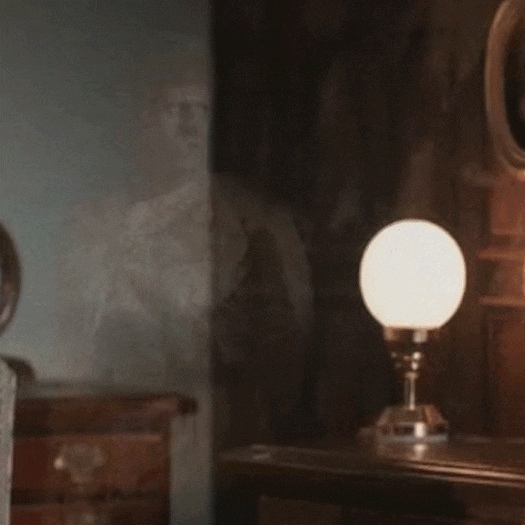 Submitted by SpectreCollector on
Submitted by SpectreCollector on

The Wilmot Apparition was an Apparition of the living, both collective and reciprocal, that occurred on board a steamship in 1863. The case has a number of unusual features that make it a classic in the history of psychical research.
S. R. Wilmot, a manufacturer who lived in Bridgeport, Connecticut, set sail from Liverpool, England, to New York on the steamer City of Limerick on October 3, 1863. His sister, Eliza, accompanied him. Wilmot shared a stern berth with an Englishman, William J. Tait.
On the second day out, a severe storm arose at sea, lasting for nine days. The ship sustained some damage. Wilmot experienced seasickness and remained in his berth for several days.
On the night following the eighth day of the storm, the winds and sea abated a little, and Wilmot was at last able to fall into a much-needed sleep. Toward morning, he dreamed he saw his wife come to the door of the stateroom, clad in her white nightdress. At the door, she noticed that Wilmot was not alone in the room, and hesitated. Then she entered, came to Wilmot’s side, bent down and kissed and caressed him, and then quietly left.
When Wilmot awoke, he was startled to see Tait staring down at him from his upper berth, which was off to one side and not directly above Wilmot. “You’re a pretty fellow to have a lady come and visit you in this way,” said Tait. Wilmot had no idea what the man was talking about. Tait explained that he had been awake when he saw a woman in a white nightdress enter the stateroom and kiss and caress the sleeping Wilmot. His description exactly matched Wilmot’s DREAM.
Tait later asked Wilmot’s sister if she had been the one to steal up to the stateroom, but Eliza denied it. Wilmot then told her about his dream and how it matched what Tait had seen.
The incident seemed so bizarre to Wilmot that he questioned Tait about it repeatedly, and on three separate occasions Tait related the same account. When the ship reached New York on October 22, Tait and Wilmot went their separate ways and never saw each other again.
On October 23, Wilmot went by rail to Watertown, Connecticut, where his wife and children were staying with Mrs. Wilmot’s parents. His wife immediately asked if Wilmot had received a visit from her on the night he had had the dream.
She then told him that the reports of storms at sea had caused her great worry about his safety at sea. She had been further stressed by the news that another ship, the Africa, had run aground in the same storm and had been forced to shore at St. John’s, Newfoundland, with serious damage.
On the night that the storm began to abate, Mrs. Wilmot lay awake in bed for a long time thinking about her husband. At about four o’clock in the morning, it seemed to her that she actually went out to search for him. She crossed the stormy sea until she came to a long, black steamship. She went up the side, descended into the cabin, passed through to the stern and proceeded until she found Wilmot’s stateroom. She described the room accurately to Wilmot, and said that when she came to the doorway, she saw a man in the upper berth intently watching her. For a moment she was frightened to go in. She decided to enter, and went to Wilmot’s side, where she kissed and caressed him, and then went away.
When she awoke in the morning, Mrs. Wilmot told her mother about the experience, which seemed to have been a dream, yet was so vivid that Mrs. Wilmot could not shake the feeling that she had physically visited her husband aboard the ship.
The case was examined in 1889 and 1890 by members of the Society for Psychical Research (SPR), which had been informed of details by a friend of Wilmot’s. Richard Hodgson, Edmund Gurney and Eleanor Sidgwick took testimony from Wilmot, his wife and sister; Tait was deceased. The researchers considered the case a remarkable one, despite the fact that more than 20 years had elapsed between the incident and the recording of its details. Even allowing for inevitable lapses of memory and the lack of Tait’s account, the case differed from other collective and reciprocal apparitions. The researchers considered various explanations; however, none of them is satisfactory.
Collective apparitions, in which an apparition is perceived by more than one person, are unusual. Even more unusual are reciprocal apparitions, in which the agent and percipient see each other, as did Mrs. Wilmot and Tait. The Wilmot case is further complicated by the fact that one of the percipients saw the apparition in a dream, and another saw the apparition in a waking state as though it had material reality. (Wilmot said that as a child he had experienced clairvoyant dreams, but nothing similar to this incident.) The agent, Mrs. Wilmot, felt she was present on the ship, but the experience had a dreamlike quality.
Gurney and Sidgwick thought the incident was most likely due to telepathy and Clairvoyance. Mrs. Wilmot’s intense anxiety and thoughts concerning her husband, and her desire to see him and comfort him, were communicated telepathically to Wilmot. Because he was sleeping at the time, they took the form of a dream. Sidgwick felt the dream strengthened the telepathic hypothesis. In addition, Mrs. Wilmot’s desire to see her husband enabled her to see the stateroom clairvoyantly.
To explain the presence of the apparition seen by Tait, the researchers theorized that Tait in turn had received telepathic impressions from Wilmot, which took visual form.
Another possibility, which was dismissed by the researchers, was that an objective presence had appeared in the stateroom—a “phantasmogenetic effi cacy,” as they called it, located in space and within a range of Tait’s senses. In other words, perhaps Mrs. Wilmot actually projected herself spontaneously out-of-body to appear on board the ship, and what Tait saw was her Double.
From a modern perspective, the telepathy explanation seems cumbersome at best and does not adequately account for the apparition seen by Tait. An out-of-body projection seems more likely. However, modern researchers do not agree on what constitutes an Out-of-Body Experience. The Wilmot case remains a puzzle.
https://occult-world.com/wilmot-apparition/
SOURCE:
The Encyclopedia of Ghosts and Spirits– Written by Rosemary Ellen Guiley – September 1, 2007
- 910 reads